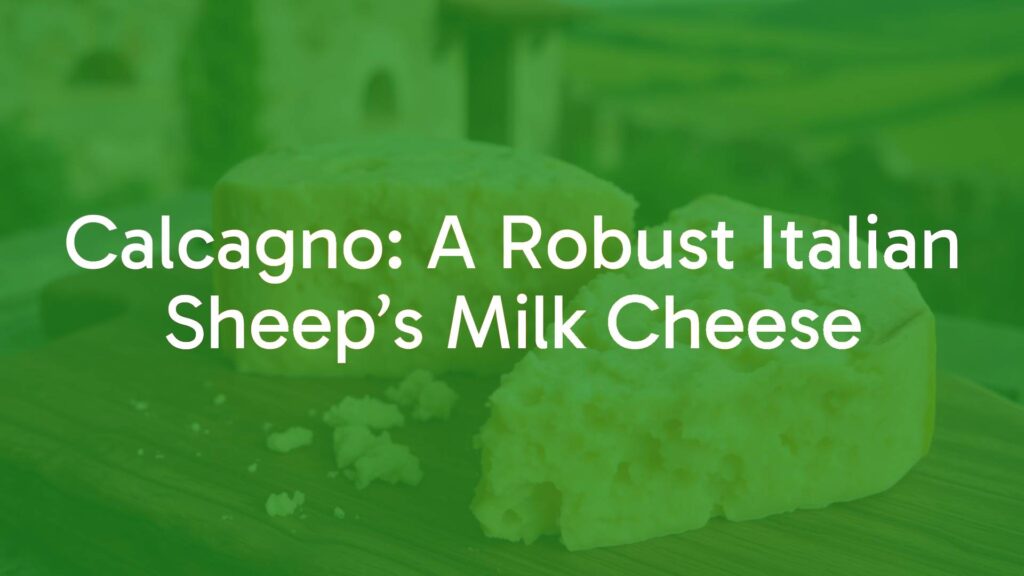Introduction to Calcagno
Calcagno is a distinctive Italian cheese with a strong character, hailing originally from the island of Sardinia and also found in parts of Sicily. Made primarily from sheep’s milk, this hard, aged cheese is cherished for its tangy flavor and crumbly texture, making it a unique presence in the landscape of Italian cheeses. Its time-honored production connects deeply with the rural traditions of southern Italy, reflecting both regional identity and centuries-old artisanal expertise.
Unique Characteristics and Flavor Profile
What sets Calcagno apart is its complex flavor, which is both sharp and savory with nutty undertones. As it matures — typically for six to ten months — its taste intensifies, developing peppery notes and a brittle consistency. The cheese has a pale straw color, with a natural rind that becomes firmer as it ages. When young, Calcagno can be somewhat milder, but it is most highly valued in its mature form for its assertive, lingering taste.
Historical Significance and Origins
The origins of Calcagno trace back to the pastoral communities of Sardinia and Sicily, where sheep farming has millennia-old roots. It evolved as a means to extend the shelf life of abundant sheep’s milk, aligning with the practical needs of rural shepherds. Traditionally, it was crafted in small batches and aged in cool cellars or caves, reflecting the agricultural cycles of the region. The enduring popularity of Calcagno within these communities underscores its role as a staple food and a symbol of Sardinian heritage.
Production Methods
Calcagno is made using whole sheep’s milk, rennet, and salt. The milk is heated and coagulated, then the curds are cut, drained, and transferred to molds. Often, black peppercorns are incorporated into the curds, adding a gentle spiciness. After pressing, the cheese is salted and aged for extended periods, during which it develops its characteristic firmness, aroma, and flavor intensity. The sardinian variant, in particular, is noted for its rustic methods, with minimal mechanization and a reliance on natural maturation environments.
Serving Traditions and Culinary Uses
Calcagno is a versatile cheese that holds a prominent place both at the table and in the kitchen. Traditionally, it is enjoyed cut into rustic wedges or crumbled over dishes. Its robust taste makes it an excellent grating cheese, often used atop pasta, risotto, or vegetable dishes. Pairing Calcagno with hearty red wines or full-bodied white varieties from Sardinia enhances its flavor. Accompaniments such as rustic breads, olives, and cured meats are classic choices for a regional antipasto platter.
Cultural Importance and Regional Variations
As a product tied closely to Sardinian and Sicilian identity, Calcagno encapsulates the flavors and lifestyle of Italy’s southern islands. While the cheese itself is somewhat niche outside Italy, within its native regions it is celebrated in local festivals and communal meals. The Sicilian variant may vary slightly in size and aging technique, but both share a reverence for traditional crafts and local ingredients. Calcagno represents not only a foodstuff but a link to the shepherding culture and rural life that continues to shape Italian culinary heritage.
Suggestions for Enjoyment
To best appreciate Calcagno, serve it at room temperature to allow its aromas and textures to shine. It complements honey or fruit preserves for a contrasting sweet note, and its crumbly nature makes it ideal for infusing rustic salads or hearty soups with depth. When integrating into cooked dishes, use sparingly to let its distinct flavor stand out. Whether enjoyed as part of a cheese board or as a flavorful accent within a meal, Calcagno’s bold character is sure to leave a lasting impression.

